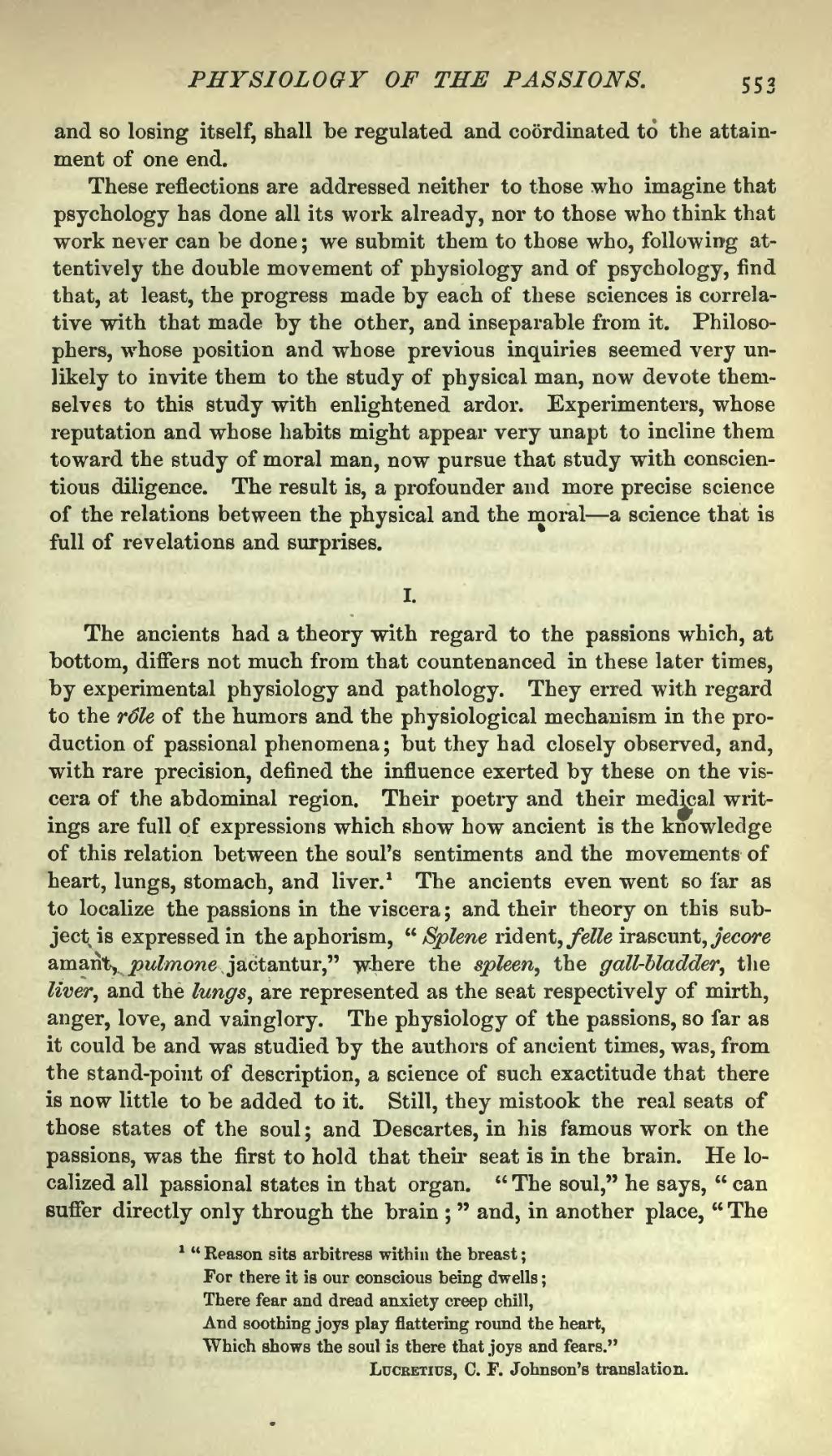and so losing itself, shall be regulated and coordinated to the attainment of one end.
These reflections are addressed neither to those who imagine that psychology has done all its work already, nor to those who think that work never can be done; we submit them to those who, following attentively the double movement of physiology and of psychology, find that, at least, the progress made by each of these sciences is correlative with that made by the other, and inseparable from it. Philosophers, whose position and whose previous inquiries seemed very unlikely to invite them to the study of physical man, now devote themselves to this study with enlightened ardor. Experimenters, whose reputation and whose habits might appear very unapt to incline them toward the study of moral man, now pursue that study with conscientious diligence. The result is, a profounder and more precise science of the relations between the physical and the moral—a science that is full of revelations and surprises.
I.
The ancients had a theory with regard to the passions which, at bottom, differs not much from that countenanced in these later times, by experimental physiology and pathology. They erred with regard to the rôle of the humors and the physiological mechanism in the production of passional phenomena; but they had closely observed, and, with rare precision, defined the influence exerted by these on the viscera of the abdominal region. Their poetry and their medical writings are full of expressions which show how ancient is the knowledge of this relation between the soul's sentiments and the movements of heart, lungs, stomach, and liver.[1] The ancients even went so far as to localize the passions in the viscera; and their theory on this subject is expressed in the aphorism, "Splene rident, felle irascunt, jecore amant, pulmone jactantur," where the spleen, the gall-bladder, the liver, and the lungs, are represented as the seat respectively of mirth, anger, love, and vainglory. The physiology of the passions, so far as it could be and was studied by the authors of ancient times, was, from the stand-point of description, a science of such exactitude that there is now little to be added to it. Still, they mistook the real seats of those states of the soul; and Descartes, in his famous work on the passions, was the first to hold that their seat is in the brain. He localized all passional states in that organ. "The soul," he says, "can suffer directly only through the brain;" and, in another place, "The
- ↑
"Reason sits arbitress within the breast;
For there it is our conscious being dwells;
There fear and dread anxiety creep chill,
And soothing joys play flattering round the heart,
Which shows the soul is there that joys and fears."
Lucretius, C. F. Johnson's translation.

